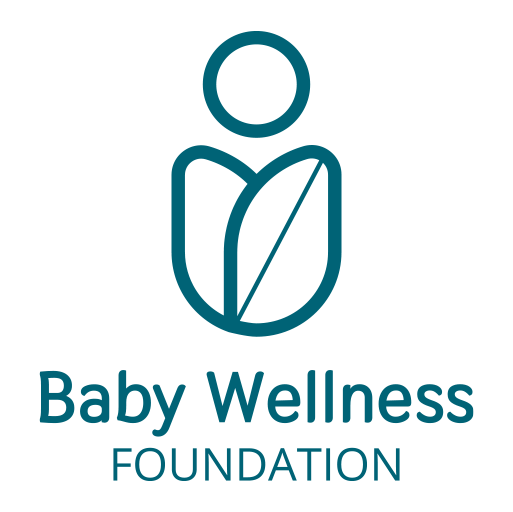Approfondimenti scientifici
Gustatory and olfactory imprinting & breastfeeding
Breastfeeding represents one of the first complex behaviors of the newborn, where nutrition, relationship, and sensory stimulation converge into a single act full of biological and emotional meaning. Beyond its caloric value, breastfeeding constitutes a multisensory experience that involves smell and taste as primary channels of recognition, regulation, and early learning.
During this process, the newborn processes odors and flavors from the body and breast milk, creating integrated sensory maps that guide feeding behavior and social orientation. These experiences are facilitated by early active neural mechanisms that make selective recognition of the mother possible and consolidate the affective bond, already starting from intrauterine life.

The olfactory system
The olfactory system is among the first to develop in the fetus. The olfactory receptors of the nasal epithelium form around the 7th gestational week, while olfactory transduction becomes functionally active around the 28th week.
Already during the fetal stage, smell is stimulated through inhalation of the amniotic fluid, which carries aromatic substances from the maternal diet and her metabolic physiology. This early exposure creates an intrauterine olfactory memory that serves as the basis for postnatal recognition of the mother. At this stage, the very first sensory bonds are built, crucial for prenatal bonding, the first form of non-verbal affective communication between mother and child.
Olfactory recognition and neurovegetative response at birth
At birth, the newborn is able to distinguish the specific odor of the breast and colostrum of its own mother, showing differential behavioral and neurovegetative responses (head orientation, reduced crying, sucking activation). The nipple and areola, thanks to the secretion of the Montgomery glands, emit highly recognizable volatile compounds that guide the newborn toward the breast.
Repeated exposure to maternal odors activates subcortical circuits (amygdala, hypothalamus, olfactory bulb) and stimulates the release of oxytocin and dopamine, reinforcing the neurobiological mechanisms of attachment and reward.
The olfactory epithelium is innervated by primary sensory neurons that project directly to the olfactory bulb, the only sensory system that bypasses the thalamus in its cortical projection. Olfactory information reaches directly the limbic structures, in particular:
- Amygdala: modulation of emotional responses;
- Hippocampus: mnemonic encoding;
- Hypothalamus: neuroendocrine response and vegetative regulation.
This privileged connection between odor and the limbic system explains the power of smell as an affective and regulatory stimulus, especially in early childhood.
The gustatory system
The gustatory system, although simpler than the olfactory one, develops as early as the 8th gestational week, with the formation of taste buds on the tongue and palate.
From the 15th–17th week onward, the fetus swallows large amounts of amniotic fluid, whose gustatory characteristics are influenced by the maternal diet (e.g., carrot, garlic, anise). This early exposure generates gustatory memory traces that influence postnatal feeding behavior.
Human milk is a sensorially rich fluid that reflects the variability of the maternal diet and presents a non-constant taste profile, favoring early sensory adaptation. The breastfed newborn is therefore exposed to gustatory diversity that:
- enhances gustatory plasticity;
- reduces food neophobia in complementary feeding;
- promotes greater acceptance of varied solid foods.
Unlike artificial formulas, which offer a constant taste, breast milk favors gustatory learning through variable experience, in an implicit sensory education logic. Taste is encoded by receptor cells located in the taste buds, which send signals through the following nerves:
- Facial (VII): for the anterior 2/3 of the tongue;
- Glossopharyngeal (IX): for the posterior third;
- Vagus (X): for the pharynx and epiglottis.
These signals converge in the nucleus of the solitary tract (NTS) in the medulla, from which connections project toward the ventroposteromedial thalamus and finally the insular cortex, where conscious taste perception occurs. Taste, like smell, has a strong implicit affective component thanks to its connection with the limbic and dopaminergic circuits of feeding reward.
Early sensory modulation through breastfeeding
In the newborn, the sensory treatment received during breastfeeding contributes to the maturation of central regulatory systems, particularly those that govern the balance between arousal, stress, and self-regulation.
Familiar odors and tastes promote:
- cardio-respiratory stability;
- physiological muscle tone;
- quiet wakefulness and attentive vigilance;
- behavioral adaptation to environmental stimuli.
In this sense, breastfeeding acts as an early multisensory regulator, able to shape the neurobehavioral trajectories of the newborn and to consolidate the bases of secure attachment, already prepared through intrauterine sensory bonding.
Breastfeeding is configured as a multisensory neuro-affective experience, in which smell and taste represent the newborn’s first relational alphabets. Interaction with maternal odors and flavors allows the construction of implicit memory traces that regulate feeding behavior, affiliation, and emotional development. The profound meaning of these experiences lies in their ability to shape the developing nervous systems through modulation of sensory, limbic, and endocrine circuits. Smell and taste are therefore not just tools to identify foods, but privileged channels to build belonging, security, and identity.
An adequate valorization of prenatal bonding, through awareness of the role of intrauterine olfactory and gustatory experiences, can represent an emerging frontier in the promotion of neurodevelopmental health. Supporting breastfeeding therefore also means supporting the sensory architecture of attachment, with long-term effects on the child’s psychophysical well-being.
Schaal, B., Marlier, L., & Soussignan, R. (2020). Olfactory function in the human fetus: Evidence from behavioral studies. Chemical Senses
Mennella, J. A., & Beauchamp, G. K. (2019). Early flavor experiences: Research update. Pediatrics
Marlier, L., Schaal, B., & Soussignan, R. (2018). Bottle-fed neonates prefer milk odors learned prenatally to other novel smells. Developmental Psychobiology
Ventura, A. K., & Mennella, J. A. (2019). Innate and learned preferences for sweet taste during childhood. Current Opinion in Clinical Nutrition & Metabolic Care
Delaunay-El Allam, M. et al. (2021). Long-lasting effects of maternal diet on infants’ sensory preferences
Nishitani, S. et al. (2020). The calming effect of maternal breast odor on the human newborn infant. Neuroscience Research
Sullivan, R. M., & Toubas, P. (2018). Clinical usefulness of maternal odor in newborns: Soothing and feeding preparatory responses. Biological Neonatology.
Ferber, S. G., & Makhoul, I. R. (2018). The effect of skin-to-skin contact (kangaroo care) shortly after birth on the neurobehavioral responses of the term newborn: A randomized, controlled trial. Pediatrics
World Health Organization. (2023). Breastfeeding and sensory development: Evidence brief. Geneva: WHO.
Pineda, R., Bender, J., Smith, J. (2022). Sensory-based interventions in the NICU: Impact on feeding readiness. Journal of Perinatology
